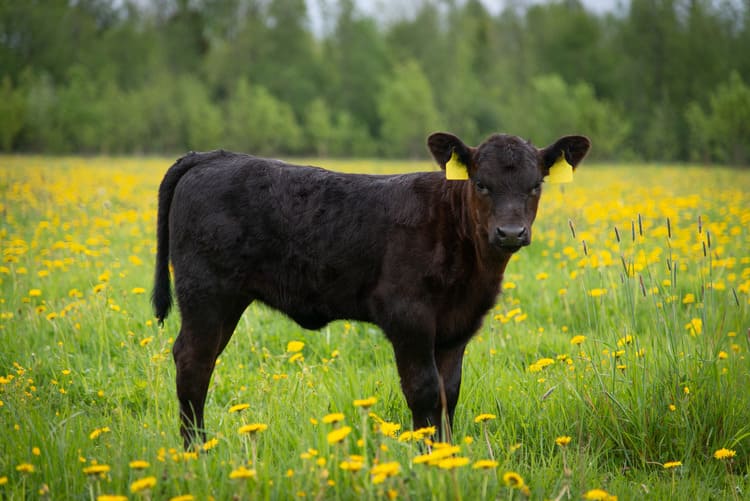The gastrointestinal tract of unweaned calves is compromised after the stress and feed restriction due to marketing and transportation. The use of feed additives to enhance intake and gut immunity at farm arrival could be a strategy to minimize those negative effects. A total of 70 dairy beef calves (50.9 ± 1.66 kg) coming from auction market and with a compromised gut integrity at arrival were used to evaluate the effect of various feed additives [FA; comprising palatability enhancers (PE), standardized olive pomace extract (OE), and tributyrin (TB)] on performance until 2 weeks after weaning. Calves were distributed in 5 treatments: calves fed milk replacer (MR) and concentrate without FA (CTR; n = 14); calves fed MR and concentrate with PE (PE; n = 14); calves fed MR with OE + PE and concentrate with PE (OEPE; n = 14), calves fed MR with TB + PE and concentrate with PE (TBPE; n = 14); and calves fed MR with OE + TB + PE and concentrate with PE (complete – COM; n = 14). At arrival animals received 2.5 L of MR twice daily at 12.5% and ad libitum concentrate feed. On day 35 of the study, animals were submitted to a social stress challenge, calves within one treatment were mixed for 24 h, and on day 36, calves returned to their home pens and the afternoon milk was removed. On day 42, all calves were weaned, and they were followed until day 56. Data were analyzed with a mixed-effects model. After transportation calves had an average of 1.6 ± 0.09 mg/L of serum Cr-EDTA the first week after arrival indicating that those calves had increased gastrointestinal permeability and a compromised gut barrier for a full week; consequently, concentrate intake during that week was decreased for all treatments (P = 0.56) with an average of 27 g·calf-1·d-1. An interaction between treatment and time (P < 0.01) was observed on concentrate intake the last two weeks of the study when calves were already weaned; on week 7, from day 42 to d 49, COM and TBPE calves had greater concentrate intake than CTR calves, and PE and OEPE did not differ among others; and on week 8, between day 42 and day 49, COM calves had the greater concentrate intake than CTR, while other treatments were in between. Although only numerical differences were observed in final BW, COM calves were heavier than the rest of the treatments at the end of the study. In calves with severe problems of gastrointestinal permeability at arrival, the mixture of palatability enhancers, standardized olive pomace extract, and tributyrin increases concentrate intake and potentially improve the recovery of the animals.

Autores: S. Martí, M. Blanch, M. Devant
Libro/Revista: Journal of Animal Science, Volume 101, Issue Supplement_3, November 2023, Pages 272–273
